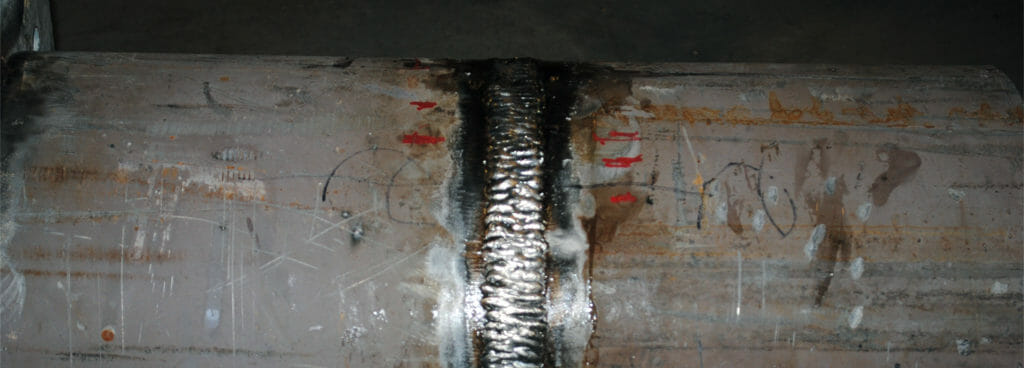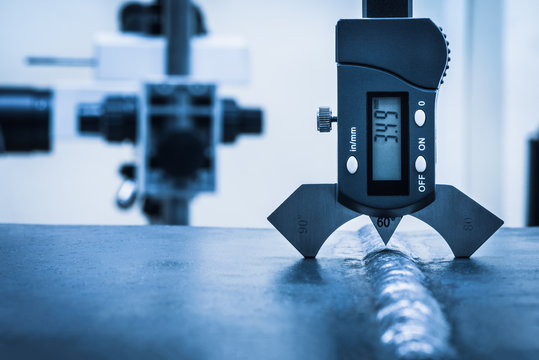Recognizing the Principles of Welding Inspection to Ensure Quality and Safety
In the realm of modern engineering, welding inspection stands as a keystone for ensuring both the quality and safety of architectural creations. The procedure includes a precise analysis of welded joints, using innovative methods such as radiographic and ultrasonic testing to spot covert imperfections. The expertise of certified assessors is critical, as they connect the space in between academic standards and sensible application. Their function extends beyond mere discovery, encompassing the documentation and interaction of findings to pertinent stakeholders. Yet, what are the nuances of these assessment techniques that make them essential for keeping structural honesty?

Relevance of Welding Examination
In the realm of commercial fabrication, the relevance of welding inspection can not be overemphasized. Welding evaluation plays an essential function in making certain the integrity, security, and long life of welded structures (Welding Inspection Madison).
The procedure of welding inherently includes intricate variables, including temperature, product residential or commercial properties, and ecological problems, all of which can influence the high quality of the weld. A thorough evaluation determines issues such as cracks, porosity, and incomplete combination, which can endanger the toughness and integrity of the weld. By discovering these issues early, rehabilitative activities can be taken, thereby decreasing the danger of failure and associated prices.
Additionally, welding assessment adds to governing conformity, as several sectors are controlled by rigorous safety standards and guidelines. Failure to abide by these regulations can result in lawful responsibilities and economic fines. Eventually, welding evaluation not only safeguards physical frameworks yet likewise shields human lives and promotes market credibilities.

Key Welding Inspection Approaches
Although welding assessment is vital to ensuring the top quality and security of welded frameworks, it is the certain methods employed that establish the performance of the examination procedure. Key welding inspection methods can be generally classified into non-destructive testing (NDT) and harmful testing. Non-destructive screening methods such as visual assessment, ultrasonic testing, radiographic testing, magnetic bit screening, and liquid penetrant screening are primarily utilized to assess the homes of a weld without creating damage. Visual examination is frequently the initial step, entailing an extensive exam of the weld's surface for flaws like splits or porosity.
Ultrasonic and radiographic testing are a lot more sophisticated methods that enable examiners to examine the interior stability of the weld. Ultrasonic testing utilizes high-frequency audio waves to find stoppages, while radiographic screening uses X-rays or gamma rays to create a photo of the weld's interior. Magnetic particle testing and fluid penetrant screening are surface evaluation methods used to locate surface area and near-surface imperfections. On the other hand, harmful testing methods entail literally damaging or reducing the weld to analyze its mechanical properties. These thorough assessment techniques ensure that welds fulfill sector requirements and safety needs, thus guaranteeing architectural stability and efficiency.
Duty of Certified Examiners
Qualified inspectors play an essential role in the welding evaluation procedure, ensuring that all welds conform with rigorous industry requirements and safety policies. Their knowledge is vital in determining flaws or abnormalities that might endanger the structural integrity of a weld. By meticulously analyzing each weld, accredited examiners help protect against potential failures that might cause unsafe crashes or pricey repairs.
To become certified, inspectors should go through extensive training and screening, which acquaints them with different welding methods, materials, and testing methods. This extensive knowledge allows them to examine weld quality efficiently and make informed judgments concerning their security and integrity. In addition, licensed inspectors excel in interpreting blueprints and specs, making sure that the welding job lines up with the task's layout requirements.
An indispensable part of their role is to record their findings extensively, giving a thorough record of the assessment procedure. This documentation is crucial for traceability and responsibility, functioning as a main record of conformity with industry criteria. Certified assessors also play a vital duty in helping with interaction between job stakeholders, offering recommendations and understandings to improve welding practices and results. Their payment is essential in keeping high degrees of quality and security in welding procedures.

Devices Utilized in Welding Inspection
Welding assessors count on a variety of specialized devices to perform their duties effectively, making certain each weld satisfies the necessary criteria. here Among these devices, visual assessment aids like amplifying glasses and mirrors are fundamental, enabling inspectors to carefully examine welds for surface issues such as fractures, porosity, and undercut. Calipers and fillet weld determines are vital for gauging weld dimensions to validate compliance with style requirements.
Advanced tools prolong past visual aids, consisting of non-destructive screening (NDT) devices. Ultrasonic screening tools are critical in identifying subsurface defects, using audio waves to reveal interior stoppages without compromising the weld's stability. In a similar way, radiographic screening employs X-rays or gamma rays to catch pictures of a weld's inside, wikipedia reference highlighting possible defects.
Magnetic particle testing is one more vital tool, specifically for spotting surface and near-surface interruptions in ferromagnetic products. By using ferrous fragments and magnetic areas, assessors can recognize flaws that might or else be invisible.
Dye penetrant inspection is frequently used for non-ferrous materials, providing a contrast-enhanced aesthetic look for surface-breaking flaws. Welding Inspection Madison. With each other, these devices allow welding examiners to comprehensively assess weld quality, ensuring safety and security and integrity in different applications across industries
Ensuring Architectural Stability

Welding procedures must follow established standards and codes, such as those defined by the American Welding Culture (AWS) or the International Company for Standardization (ISO) These guidelines guarantee that the welds can endure ecological aspects and operational tensions. Qualified and accredited welders play an essential role in this procedure, as their proficiency ensures that strategies are used properly, reducing defects such as splits, porosity, and incomplete fusion.
Post-weld inspection is an additional vital component of validating structural honesty. Non-destructive screening (NDT) methods, consisting of ultrasonic testing and radiographic screening, are you could try this out employed to detect subsurface problems without compromising the bonded structure. These inspections verify that the welds meet the needed quality requirements, providing guarantee of their resilience and integrity. Ultimately, making sure structural stability in welding not just safeguards human lives yet likewise protects investments and boosts the longevity of engineered frameworks.
Conclusion
The fundamentals of welding inspection are essential for maintaining the top quality and safety and security of welded structures. By implementing essential examination approaches, such as aesthetic evaluations and non-destructive testing, possible problems that could endanger architectural stability are identified. Qualified examiners are vital in guaranteeing conformity with market standards and reliable communication amongst stakeholders. The usage of specialized tools better improves the evaluation procedure, eventually safeguarding human lives and extending the lifespan of bonded constructions.
Welding evaluation plays a crucial duty in ensuring the stability, safety and security, and longevity of welded frameworks.Although welding examination is crucial to making sure the top quality and safety of welded frameworks, it is the certain approaches employed that determine the effectiveness of the evaluation procedure. Secret welding examination approaches can be generally categorized into non-destructive screening (NDT) and devastating screening.Qualified inspectors play a pivotal role in the welding evaluation process, making sure that all welds abide with stringent industry standards and safety regulations.The fundamentals of welding inspection are important for preserving the high quality and safety of welded structures.
Comments on “How Regular Welding Inspection Madison Can Conserve You Time and Money”